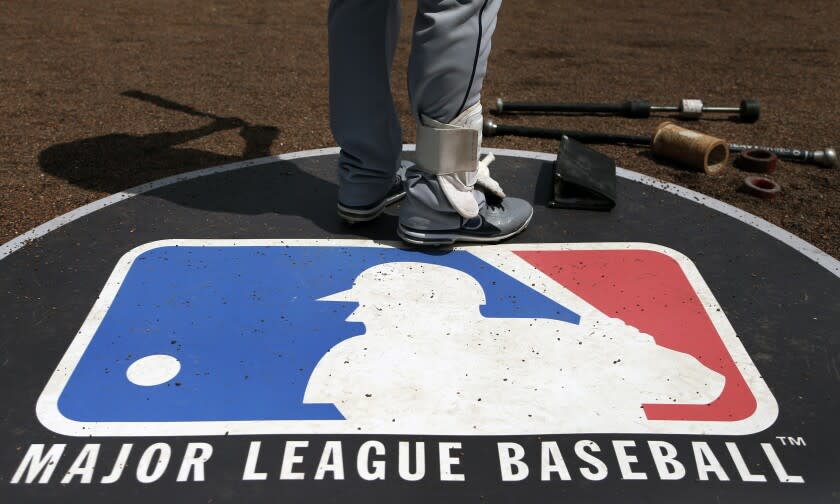Commentary: It's time for baseball to realign its divisions. Here's what it should look like

In 2022, the Angels will play 19 games against the Texas Rangers and none against the San Diego Padres.
In 2023, the Angels will play 14 games against the Rangers and three against the Padres.
That’s progress. But the next frontier of schedule reform should involve radical realignment, in which divisions would be organized not by traditional league structure but by geography — more games against teams closer to home, with less travel for players and a more attractive home schedule for fans. The Angels and Padres might not have a rivalry now, but one could develop after playing each other year in and year out.
Major League Baseball is expected to consider radical realignment, but only after the Oakland Athletics and Tampa Bay Rays resolve their long-running searches for a new ballpark, and after expansion to 32 teams.
That could be years away, but why wait? Let’s assume the A’s and Rays stay where they are, and expansion teams are awarded to Montreal and Nashville. Here’s our plan:
*The Cardinals and Cubs have one of baseball’s three greatest rivalries. We’ll maintain that by making one switch in the division-heavy schedules: all of the Pirates’ games against the Cubs go to the Cardinals, and all of the Cardinals’ games against the Marlins go to the Pirates. When the Pirates get serious about competing, MLB can relegate another NL Central team to play a schedule heavier on the Marlins and lighter on the Cardinals.
This story originally appeared in Los Angeles Times.

